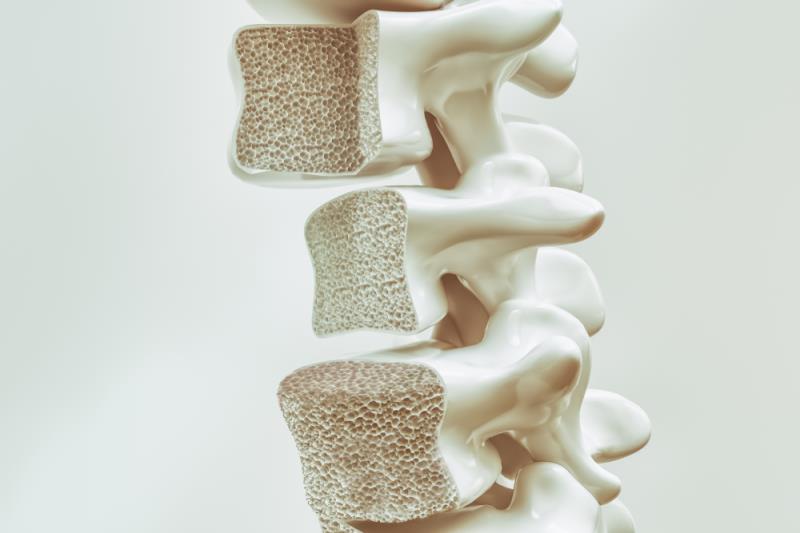
Denosumab is superior to risedronate in increasing spine and hip bone mineral density (BMD) through month 24 and may be a new treatment option for patients with glucocorticoid-induced osteoporosis (GIOP), according to results of a multicentre, randomized, phase III trial.
“In the past, we were arguing whether we could use denosumab in GIOP patients. Results from this direct head-to-head comparison showed that denosumab had clear efficacy,” explained Dr Carmen Ho of the Department of Medicine, Tung Wah Hospital, Hong Kong.
Results of the study showed that denosumab was superior to risedronate in increasing lumbar spine and total hip BMD at all time points among glucocorticoid-initiating patients (24-month lumbar spine BMD increase: 6.2 percent vs 1.7 percent; p<0.001) (24-month total hip BMD increase: 3.1 percent vs 0.0 percent; p<0.001) and among glucocorticoid-continuing patients (24-month lumbar spine BMD increase: 6.4 percent vs 3.2 percent; p<0.001) (24-month total hip BMD increase: 2.9 percent vs 0.5 percent; p<0.001). [Arthritis Rheumatol 2019;71:1174-1184]
In addition, denosumab significantly reduced the levels of bone turnover markers for both reabsorption (C-telopeptide of type I collagen [CTX], from day 10 to month 12) and formation (N-propeptide of type I collagen [PINP], from month 3 to month 12), although no significant differences in the reductions were seen by month 24 between the denosumab and risedronate groups.
In this phase III, international, randomized, double-blind, double-dummy, active-controlled, parallel-group study, 795 patients ≥18 years old who had received glucocorticoids (7.5 mg daily prednisone, or equivalent) for <3 months (glucocorticoid-initiating group; n=290) or ≥3 months (glucocorticoid-continuing group; n=505) before screening were enrolled. All patients <50 years old had a history of osteoporotic fracture, and glucocorticoid-continuing patients aged ≥50 years had T scores of ≤−2.0 (or ≤−1.0 with fracture history). Patients in both groups were randomized (1:1) to receive subcutaneous denosumab 60 mg Q6M or risedronate 5 mg orally QD for 24 months, with daily calcium and vitamin D.
Overall, 45.3 percent of patients were receiving ≥1 immunosuppressant therapy at baseline. Methotrexate, azathioprine and leflunomide (33.2 percent, 5.3 percent and 5.0 percent, respectively) were used by ≥5 percent of patients.
“Glucocorticoids are widely used in medicine. Their long-term use is associated with an increased fracture risk,” said Ho.
Though effective in osteoporosis, adherence to bisphosphonates could be undermined by inconvenient dosing regimens and potential side effects. Denosumab, a human monoclonal antibody which binds to and neutralizes the activity of human RANKL, has previously been shown to be effective in improving BMD at the spine and hip compared with risedronate. [RMD Open 2016;2:e000313; J Rheumatol 2001;28:1298-1305]
In the current study, incidence rates of adverse events (AEs), serious AEs and any infection were similar between the denosumab and risedronate groups (82.2 percent vs 77.9 percent, 5.8 percent vs 6.5 percent, and 36.3 percent vs 36.4 percent, respectively). As a safety endpoint, osteoporosis-related fractures were reported in 8.8 percent and 9.1 percent of patients in the denosumab and risedronate groups, respectively.
“We are confident that denosumab is an option for treatment of at least 24 months for patients with GIOP,” remarked Ho.